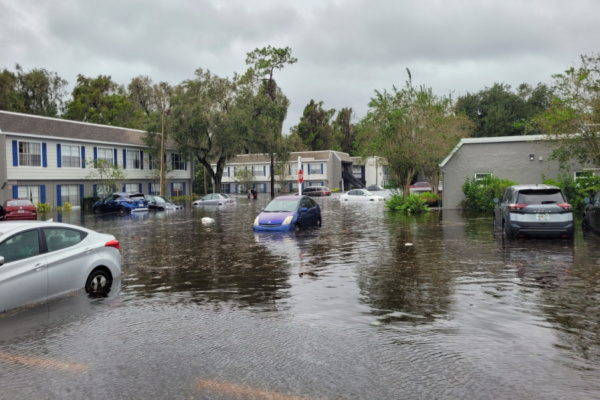There is no time of year more likely for a tropical system to be spinning in the Atlantic than September 10, which is the climatological peak of the Atlantic Hurricane Season.
As AccuWeather reports, around 50% of all Atlantic hurricane seasons since the dawn of the satellite era in 1966 have had at least one hurricane traveling across the basin on Sept. 10, according to Colorado State meteorologist Philip Klotzbach.
While the peak is still widely recognized to be on Sept. 10, other dates have been considered. Meteorologist Brian McNoldy, who works as a researcher at the University of Miami, has carefully analyzed the question and considered numerous factors, and concludes that the peak occurs within the first two weeks of September — depending on what metrics are being considered.
When considering only named storms from 1991-2020, the new peak date would be Sept. 12 instead of Sept. 10, McNoldy found. Using a separate metric, the amount of Accumulated Cyclone Energy (ACE) measured in the basin, the peak shifts to Sept. 14. ACE is a measure of the intensity and duration of cyclones, with stronger, long-lasting storms accumulating more ACE.
AccuWeather Senior Meteorologist and Hurricane Expert Dan Kottlowski said he doesn’t expect a changing climate to shift the peak date. “Climate change will both lead to more early-season development and more late-season development due to warmer than normal sea surface temperatures,” Kottlowski explained. “So the date for the middle of the season probably won’t change.”
Klotzbach, whose specialty is studying the Atlantic basin, also does not foresee a change in the date on which the peak of hurricane season occurs. He told AccuWeather that he hasn’t seen much evidence suggesting the peak of hurricane season could shift, even in the face of a warming climate.
However, there has been conjecture that hurricane season could be trending longer than the official six months that it currently covers. In fact, the National Hurricane Center is investigating the possibility of moving the official start of hurricane season to about two weeks earlier than its June 1 start date.
But Klotzbach said the peak is poised to stay about the same due to two key factors: warm water and wind shear. “While Atlantic sea surface temperatures typically continue to warm until late September/early October, vertical wind shear starts to increase relatively quickly in late September, knocking down storm activity,” he said, adding that this is especially pronounced in the eastern and central parts of the basin.
“September 10 is basically when you still have low vertical wind shear, plenty of moisture and increasing sea surface temperatures,” Klotzbach continued. “The increasing vertical wind shear tends to dominate over the continued warming sea surface temperatures as you move later in September.”
September has seen more Category 5 hurricanes than any other month by far, with 21 different storms achieving the highest measure on the Saffir-Simpson hurricane wind scale. August comes in at a distant second place, with seven Category 5 storms recorded.
The most recent storm to reach Category 5 status was Hurricane Ian, which reached the intensity briefly over the Gulf of Mexico before striking Florida as a Category 4 storm on Sept. 28, 2022. Some of the Atlantic Basin’s most notorious storms have made their wrath felt in September, including Hurricane Ike (Category 2 in 2008), Hurricane Isabel (Category 5 in 2003), Hurricane Hugo (Category 4 in 1989), Hurricanes Irma and Maria (Category 5’s in 2017), and Hurricane Dorian (Category 5 in 2019).
Hurricane season continues well beyond Sept. 10, with the season not officially ending until Nov. 30. Powerful storms regularly form in the latter weeks of September and into October, with a secondary peak in tropical development occurring around Oct. 15.
The October peak is attributable to the counter-clockwise wind pattern known as the Central American Gyre that often sets up over Central America as the month progresses. “The second peak is related to more frequent fronts reaching deeper into the tropics while sea surface temperatures remain warm and helping to trigger storm development,” Kottlowski said.
—
Photo Credit: america365 / Shutterstock.com
